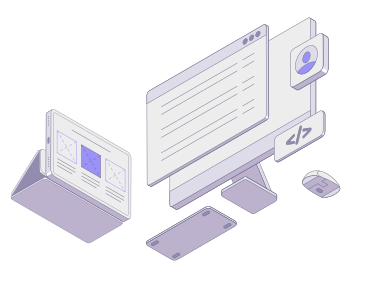




What is WP? Your Complete Guide to WordPress
If you’ve been researching how to create a website, you’ve likely come across the term “WP.” But what is WP, exactly? WP stands for WordPress, the world’s most popular content management system (CMS). Over the years, “WP” has become a shorthand reference for WordPress, commonly used in online communities, search queries, and social media platforms. WordPress powers more than 40% of all websites on the internet today, ranging from personal blogs to large e-commerce stores. In this guide, we’ll explore what WordPress is, how it works, and why it’s the go-to platform for website creation and management.
What is WP (WordPress)?
WordPress (WP) is a free, open-source content management system that allows users to create, manage, and publish websites. WordPress was launched in 2003 by Matt Mullenweg and Mike Little as a free, open-source platform to make website creation accessible to everyone, regardless of technical expertise. Originally designed as a blogging platform, WordPress has evolved into a fully-featured CMS that powers websites of all sizes, from personal blogs to large eCommerce sites and Fortune 500 company websites. Today, WordPress is one of the most popular website builders in the world, supported by a vibrant community of developers, designers, and users.
There are two versions of WordPress:
- WordPress.com: A hosted platform that handles all the technical aspects for you but offers limited customization and control.
- WordPress.org: A self-hosted version that gives you full control over your site’s functionality and design. This version is often referred to as “WordPress” or “WP,” and it’s the focus of this guide.
Why is WordPress So Popular?
WordPress stands out from other content management systems for several key reasons:
User-Friendly Interface
One of the biggest advantages of WordPress is its user-friendly interface. You don’t need to know how to code or have advanced technical skills to create and manage a website. The platform uses an intuitive dashboard where you can easily manage your site’s content, upload media, and customize its design.
Open Source and Free
WordPress is open-source software, meaning it’s free to use, modify, and distribute. With WordPress, you only need to pay for a domain name and hosting services, making it a cost-effective solution for individuals and businesses alike.
Endless Customization with Themes and Plugins
WordPress offers an extensive library of themes and plugins. Themes control your website’s appearance, while plugins add new features and functionality. Whether you want to create a minimalist blog or a complex online store, there’s likely a WordPress theme and plugin to suit your needs.
SEO-Friendly
WordPress is built with search engine optimization (SEO) in mind. Its code is clean and optimized for search engines, making it easier for your site to rank higher in search results. Additionally, there are many SEO plugins available, such as Yoast SEO, to further optimize your content and website.
Mobile-Responsive
With mobile traffic accounting for more than half of all web traffic, having a mobile-friendly website is essential. WordPress themes are often responsive, meaning they automatically adjust to different screen sizes, providing a seamless experience for both desktop and mobile users.
Strong Community Support
WordPress has a massive global community of developers, designers, and users who contribute to the platform by creating themes, plugins, and offering support. If you ever run into issues or need help with your WordPress site, there’s a wealth of online forums, tutorials, and documentation available.
Advantages of WordPress
- Ease of Use: Even beginners with no coding experience can create and manage websites using WordPress. The user-friendly dashboard simplifies the process of adding content, managing media, and customizing themes.
- Scalability: WordPress can handle websites of any size, from small personal blogs to large corporate sites. You can scale up your site by adding features and capabilities with plugins and custom development.
- SEO-Friendly: WordPress has built-in SEO features, and with plugins like Yoast SEO, you can easily optimize your content and site structure to improve search engine rankings.
- Customization Options: With thousands of themes and plugins, WordPress is highly customizable to suit the specific needs of any business or individual.
- Security Features: WordPress is regularly updated with security patches, and there are plugins available to help secure your site against threats.
Disadvantages of WordPress
- Security Risks: Due to its popularity, WordPress is often targeted by hackers. It’s essential to keep your themes, plugins, and core software updated to avoid vulnerabilities.
- Performance Issues: With too many plugins or poorly coded themes, your site may experience slow load times. Proper optimization is necessary to maintain speed and performance.
- Learning Curve for Advanced Features: While basic WordPress functions are easy to use, advanced customization and plugin usage may require technical knowledge or the help of a developer.
Percentage of Websites Using WordPress
While the statistics vary depending on who you ask, as of 2024, WordPress powers between 35% and 43% of all websites on the internet. This massive market share highlights the platform’s widespread adoption and versatility, making it the most popular content management system globally.
Key Features of WordPress
So, what makes WP stand out from other website builders and content management systems? WordPress is known for being easy to use, especially for beginners. With its intuitive dashboard, even non-technical users can easily add content, images, and updates. Advanced customization may require some learning, but for most users, WordPress’s flexibility and simplicity make it a popular choice for website building.
Here are some of the key features:
1. Themes and Design Flexibility
WordPress offers thousands of free and premium themes that allow you to customize the look of your website without any design experience. You can adjust layouts, fonts, colors, and more with just a few clicks. If you have coding knowledge, you can further customize your theme for a unique website design. We build all of our sites with the industry-leading Elementor Page builder, which powers 8.45% of all WordPress sites.
2. Plugins for Extended Functionality
WordPress has over 50,000 plugins that allow you to add nearly any feature you can think of. Want to set up an e-commerce store? Use WooCommerce. Need to optimize your site for search engines? Install Yoast SEO. Other popular plugins enable contact forms, image sliders, social media sharing, and security enhancements. We’re experts at integrating third-party software with WordPress sites to enhance functionality, streamline operations, and improve user experience.
3. Built-In Blogging Tools
Originally built as a blogging platform, WordPress still excels at blogging. It offers an easy-to-use editor where you can draft, format, and publish blog posts. You can organize posts into categories, schedule future posts, and enable comments to engage with your audience.
4. Media Management
WordPress makes it easy to manage and display media. You can upload images, videos, audio, and documents directly to your website’s media library and insert them into your posts or pages. Plus, WordPress supports embedding from platforms like YouTube and Vimeo, enabling you to integrate rich media content into your site.
5. E-Commerce Capabilities
With the WooCommerce plugin, WordPress turns into a fully functional e-commerce platform. You can create an online store, list products, manage inventory, process payments, and handle shipping—all from your WordPress dashboard.
6. Multilingual Capabilities
WordPress is a multilingual platform, supporting numerous languages. With plugins like WPML, Weglot, and Google Translate you can easily create a multilingual site to reach a broader, global audience.
How to Get Started with WordPress
Ready to build your website with WordPress? Here’s a simple step-by-step guide to getting started:
1. Choose a Domain Name and Hosting Provider
To create a WordPress site, you’ll need a domain name (e.g., www.yourbusiness.com) and a web hosting provider. Many hosting providers, such as WPEngine, Bluehost, SiteGround, offer one-click WordPress installations and excellent support.
2. Install WordPress
Most hosting providers offer easy WordPress installation. If you’re using WordPress.org, log into your hosting account and find the WordPress installation option. Once installed, you’ll have access to your site’s dashboard, where you can start building your website.
3. Select and Customize Your Theme
Choose a WordPress theme that fits your brand and website needs. You can browse free themes directly from your dashboard under the Appearance > Themes section. For more customization options, consider investing in a premium theme from marketplaces like ThemeForest.
4. Install Plugins
Extend your website’s functionality by installing plugins. From your dashboard, navigate to Plugins > Add New, then search for the plugins you need. Popular plugins include Yoast SEO for search engine optimization, Contact Form 7 for forms, and Jetpack for security and performance.
5. Create Content
Now that your site is set up, start creating pages and posts. You can add content by navigating to Posts for blog articles or Pages for static content (e.g., “About Us” or “Contact”). Use the WordPress editor to format your content and add media.
Requirements or Pre-requisites to use WordPress
To install WordPress, you need the following:
- Domain Name: A web address where your website will be accessible (ex www.yoursite.com).
- Web Hosting: A server to host your WordPress site. Most hosting companies offer WordPress-specific plans that simplify the installation process.
- MySQL Database: WordPress requires a MySQL or MariaDB database to store all of your website’s data.
- PHP Support: Your server must support PHP, the scripting language WordPress runs on. Most hosting providers meet these requirements, and many offer one-click WordPress installations to make the process even easier.
How does WordPress use WP in File Structures?
In WordPress’s file structure, “WP” is used as a prefix for many core files and folders. For instance:
- wp-config.php: This file contains configuration settings for your WordPress installation.
- wp-content: This directory stores your themes, plugins, and uploaded media.
- wp-includes: This folder holds the core files that make WordPress function.
Using “WP” as a prefix helps distinguish WordPress files from other elements on your server.
What Types of Websites Can WordPress Make?
WordPress is incredibly versatile and can be used to create a wide range of websites, including:
- Blogs and Personal Websites: Share your thoughts, experiences, or hobbies with the world.
- Business Websites: Build a professional online presence for your company.
- eCommerce Stores: Using WooCommerce, you can set up an online store to sell products or services.
- Membership Sites: Restrict content and create exclusive areas for paying members.
- Portfolios: Showcase your creative work, including design, photography, and writing.
- Nonprofit and Charity Websites: Raise awareness and accept donations online.
- Forums and Social Networks: Use plugins to create online communities or discussion boards.
WordPress Courses, Resources, and Tutorials
If you’re looking to learn WordPress, there are many online courses and resources available. With these resources, you can learn everything from basic site setup to advanced customization and development.
- WordPress.org Developer Guide: The official WordPress documentation and reference guide.
- WPBeginner: A popular site offering tutorials, tips, and beginner guides for learning WordPress.
- YouTube Channels: Many developers and educators offer free, step-by-step WordPress tutorials. From basic WordPress setup, to detailed theme and plugin-specific tutorials, to advanced custom CSS and PHP code, YouTube is a fantastic resource for everything WordPress.
- AI ChatBots: In recent years, artificial intelligence chatbots like ChatGPT have gotten incredibly adept at answering basic questions about WordPress. In addition, they are a great resource if you’re unable to find a plugin or code that can achieve some functionality on your WordPress site. We frequently use chatbots to write custom CSS, PHP, and JavaScript to achieve complex client requests with seemingly no other solution than custom code.
- Udemy & Coursera: These platforms offer comprehensive WordPress courses for beginners and advanced users alike.
Conclusion: Why WP is the Go-To Platform for Building Websites
So, what is WP? In short, WP (WordPress) is the most powerful, versatile, and user-friendly content management system available today. Whether you’re a blogger, business owner, or developer, WordPress provides all the tools you need to create a professional and fully functional website without needing advanced technical knowledge. With its vast library of themes, plugins, and SEO capabilities, WordPress allows you to customize your site to meet your exact needs—whether you’re running a personal blog, an e-commerce store, or a corporate website.
The platform’s scalability and strong community support make it a long-term solution for businesses and individuals looking to grow their online presence. With its regular updates and security features, WordPress ensures that your website remains both current and protected from potential threats.
Ready to start your WordPress journey? Whether you’re setting up a basic site or need a more complex solution, WP offers the flexibility, performance, and ease of use to help you achieve your goals. Contact Masthead Technology today for expert WordPress development and website optimization services.
FAQs
1. What is WP?
WP stands for WordPress, the world’s most popular content management system used for building and managing websites.
2. Is WordPress free to use?
Yes, WordPress is free, but you’ll need to pay for web hosting and a domain name. Premium themes and plugins may also come with additional costs.
3. Can I use WordPress without coding skills?
Absolutely. WordPress is designed for users of all skill levels. You can build a fully functional website without writing a single line of code.
4. What’s the difference between WordPress.com and WordPress.org?
WordPress.com is a hosted platform with limited customization, while WordPress.org is a self-hosted solution that gives you full control over your website.
5. How do I install plugins on WordPress?
To install plugins, log into your WordPress dashboard, go to Plugins > Add New, search for the plugin you need, and click Install Now.

